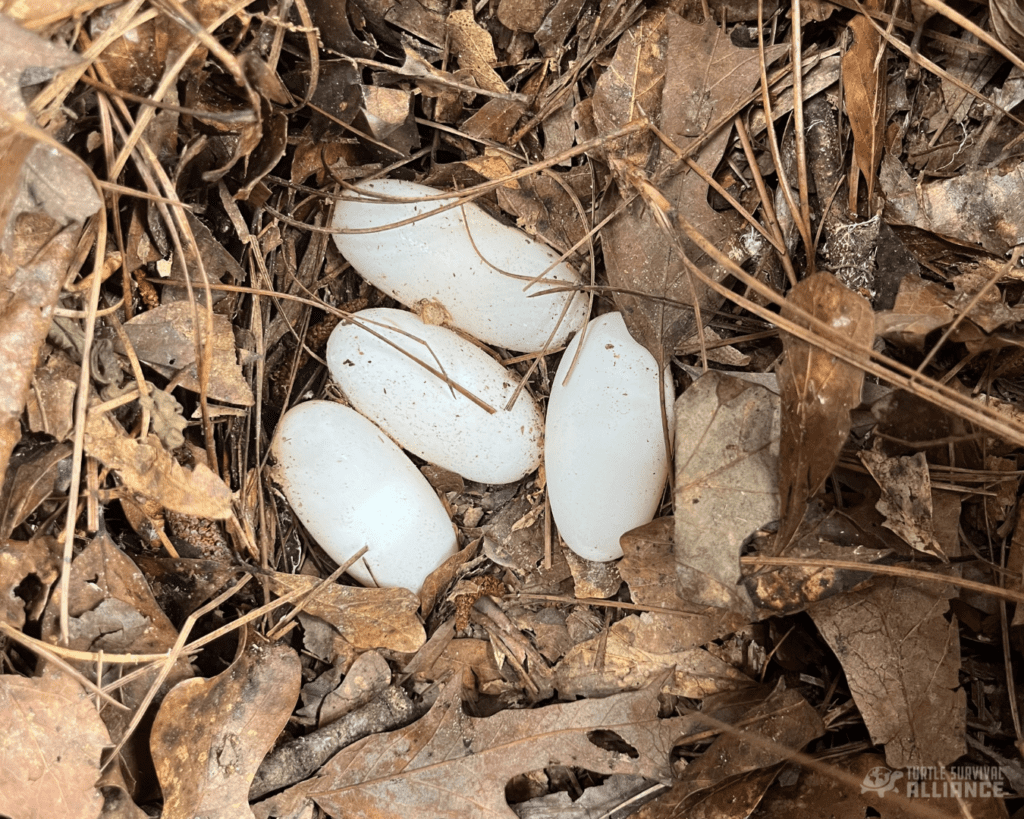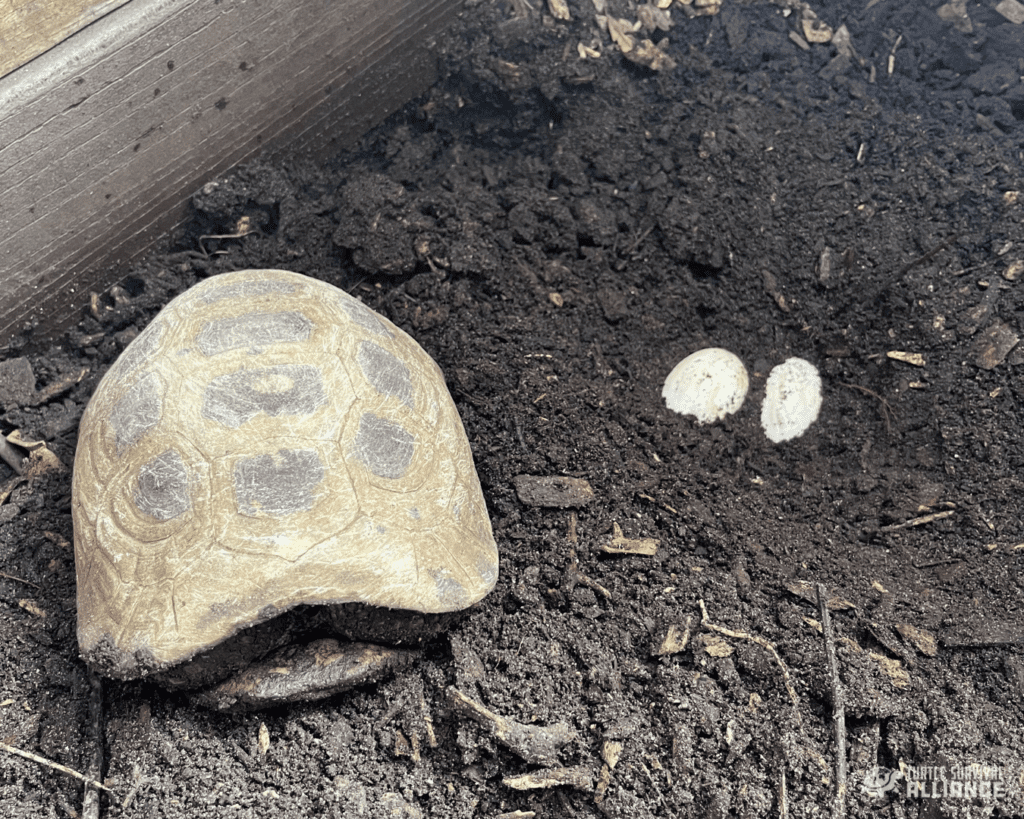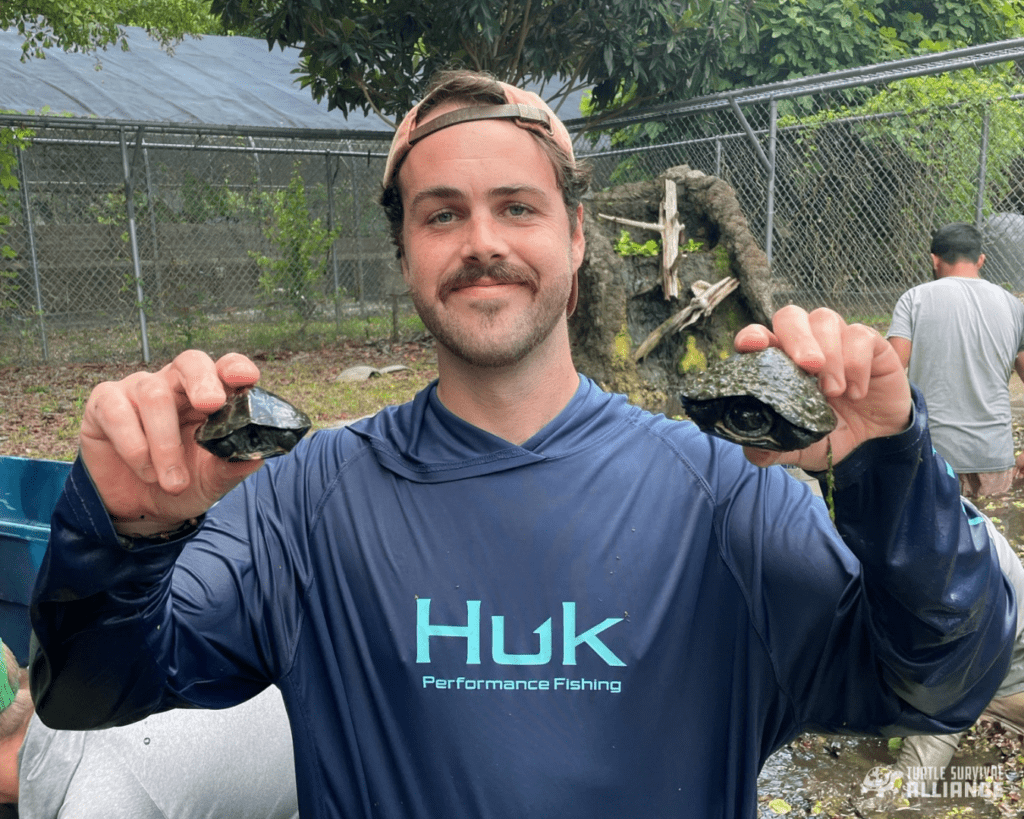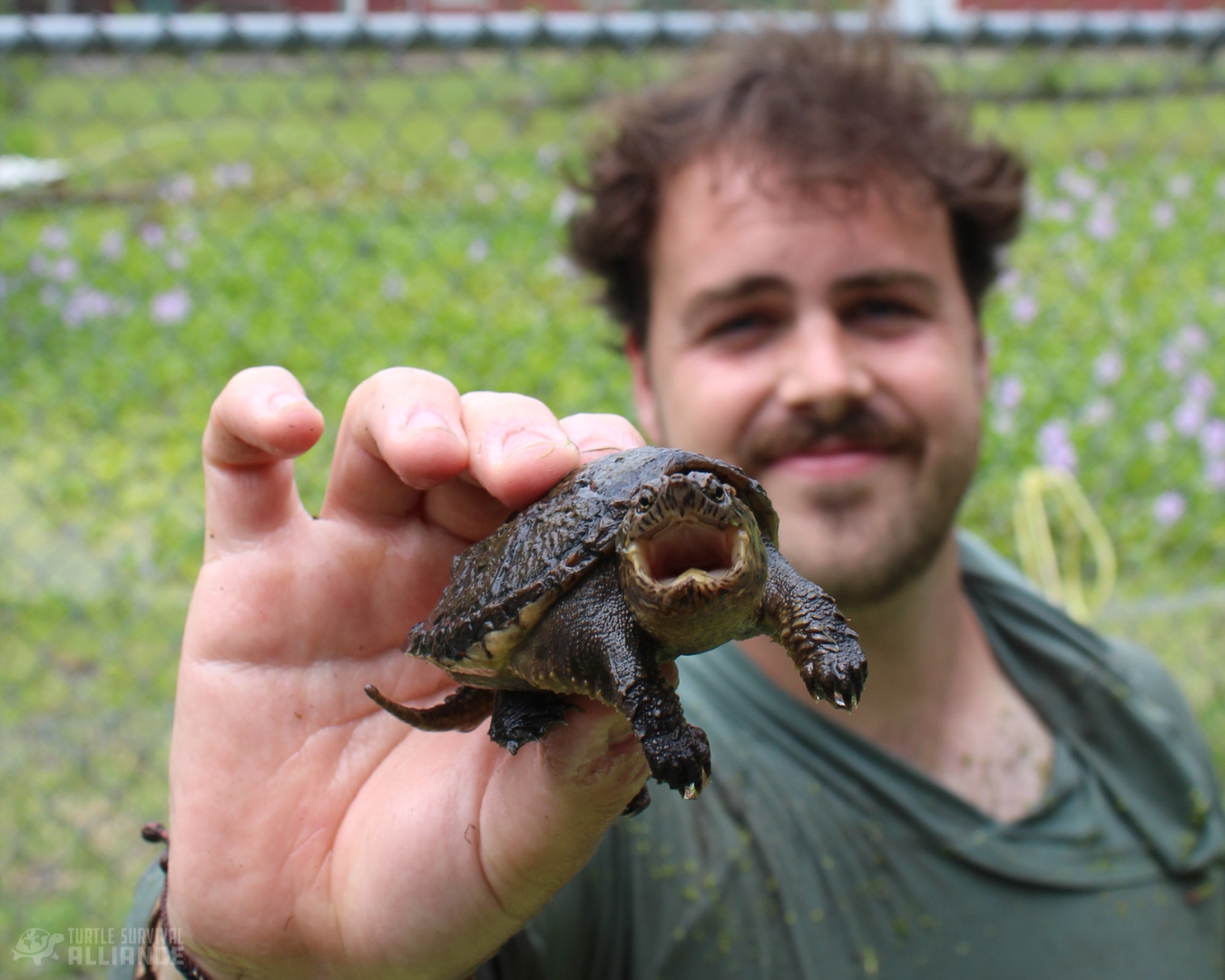Tails from the Turtle Survival Center: A Day in the Life of a Chelonian Keeper
By AJ Fetterman, Chelonian Keeper II, Turtle Survival Center
When it comes to turtle and tortoise conservation, there is no better place to work than Turtle Survival Alliance’s Turtle Survival Center (TSC, the Center). At the Center, we house over 700 individuals of some of those most endangered species of turtle and tortoise in the world. A standout for me is the Burmese Star Tortoise (Geochelone platynota)—my favorite species. We have five of them and have produced many offspring in the past, and we have an enormous female that is definitely the “star” of the Center.
The main mission of the Center is to breed as many genetically diverse turtles as possible to ensure that these species remain on our planet for generations to come. We would always prefer to keep the animals in the wild living a normal turtle life, but with some of the most endangered species, sometimes there is no wild left remaining. Some of the species we work with, like the Rote Island Snake-necked Turtle (Chelodina mccordi), can no longer be found in the wild at all. We produce many individuals of this species every year and without facilities like ours carrying out captive breeding, the future for this species would be in serious peril.
That brings us to me, my name is AJ and I am a Chelonian Keeper at the Turtle Survival Center. I am a part of a team that’s responsible for maintaining this collection of turtles and tortoises and providing an enriching life for them that replicates to the best of our ability their wild environment. This job comes with some really cool responsibilities and duties, all of which I’m excited to share with you in this series.
Egg-citing Springtime Clutches
My favorite part of the job is the collection and incubation of eggs and getting to care for all of the hatchlings we produce every year. We are in full-blown egg collection season, as you can see with this nest of Bourret’s Box Turtle (Cuora bourreti) eggs that I found just this week (below). This nest of eggs was the first time we have seen four eggs in a single clutch for this species, which made it a pretty exciting find. So far three of the eggs are showing signs of development, giving us hope for potential hatchings.

We also recently found some Forsten’s Tortoise (Indotestudo forstenii) eggs (below). This species will lay only one or two eggs per clutch and are larger than those of the Bourret’s Box Turtle. These tortoises can take a notoriously long time to develop inside their eggs, but so far they are showing good signs of development.

Another spring tradition is our roundups for dozens of turtles inhabiting the eight large ponds at the Center. Every spring and fall we jump into the ponds and collect all of the turtles by hand to do an overall health assessment and record their weights. Most of the turtles in these ponds are juvenile Red-Necked Pond Turtles (Mauremys nigricans) and Vietnamese Pond Turtles (Mauremys annamensis). It’s always a long and exhausting process, but a necessary task to ensure everyone is happy and healthy.

Every season brings new tasks and duties and I am excited to bring everyone along for the ride. Every Tails from the Turtle Survival Center blog will have a different topic; some of them are fun and exciting, and others may be difficult, all of which are necessary parts of the fight to keep these species existing on our planet. I also look forward to chatting with two of the other Chelonian Keepers, Rachael, and Nita, and introducing you to some of the faces and motivations of those working to keep the Center up to our high standards of care.
Stay tuned for another blog coming soon!
-AJ
Header image: AJ holds a young Common Snapping Turtle (Chelydra serpentina) that had found its way into the ponds at the Turtle Survival Center, photo by Chelsea Rinn.
